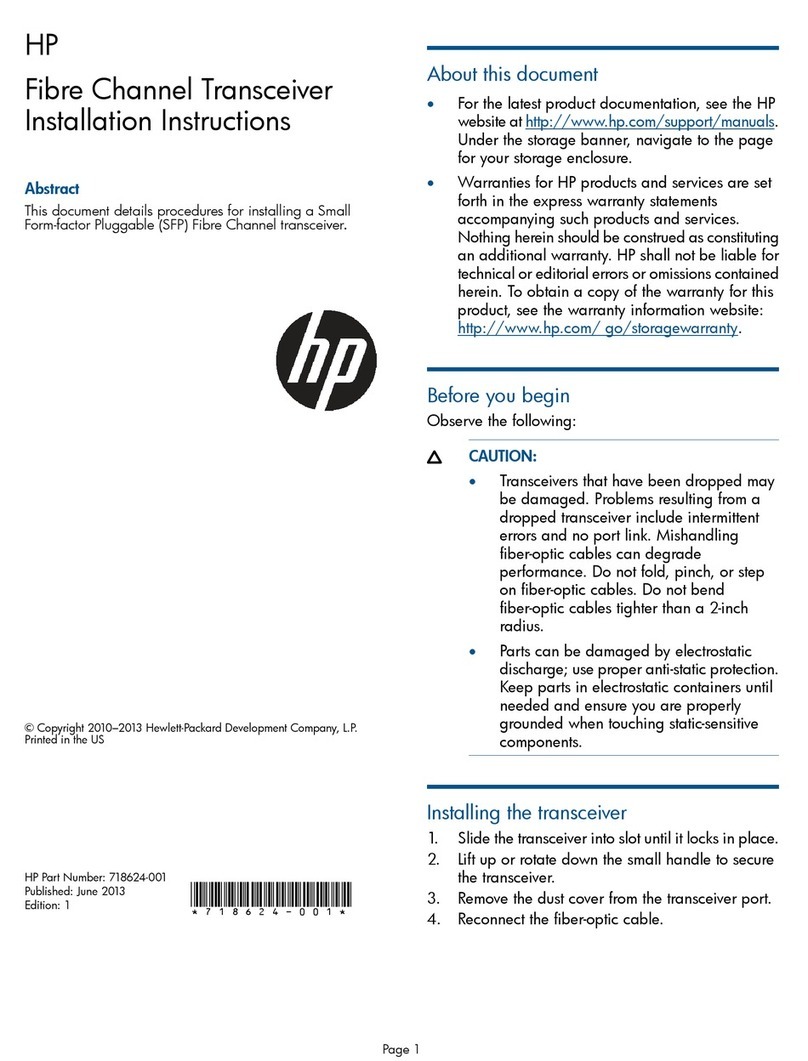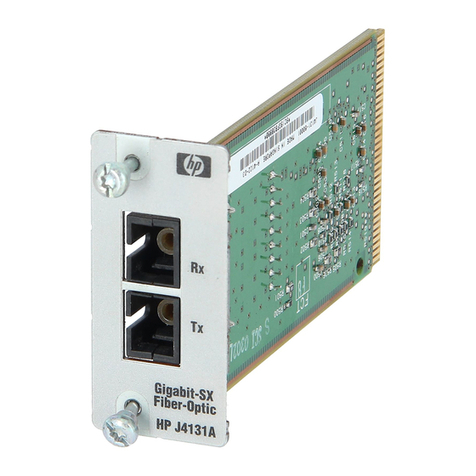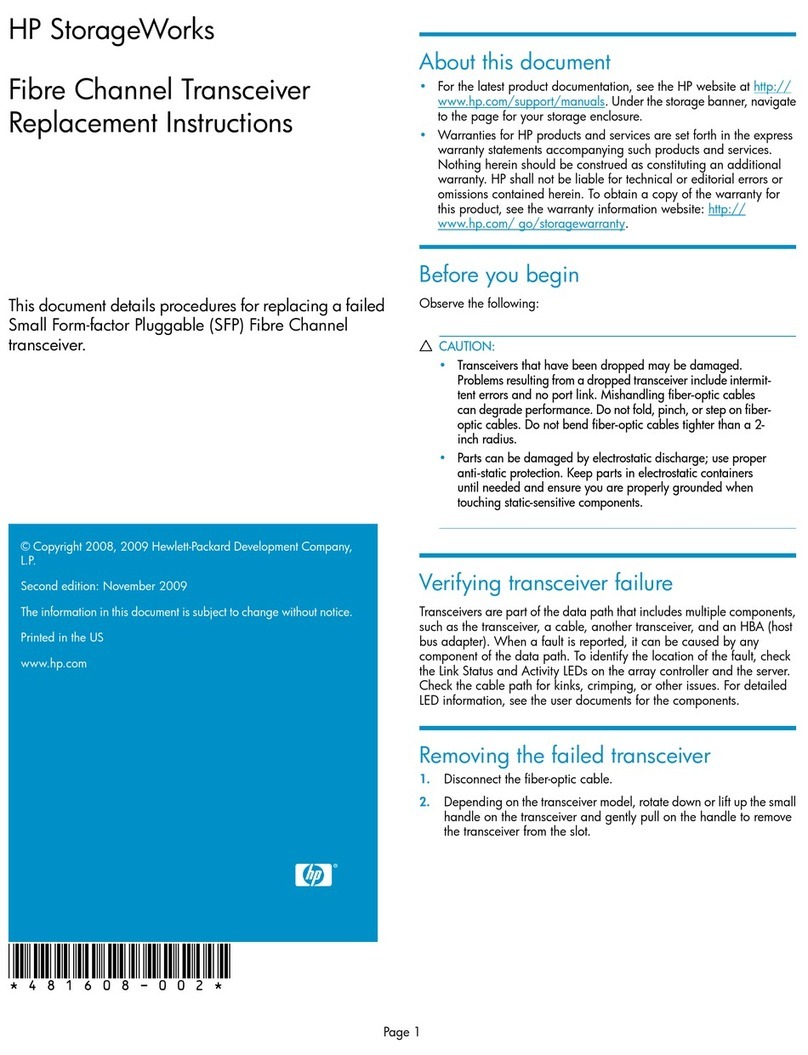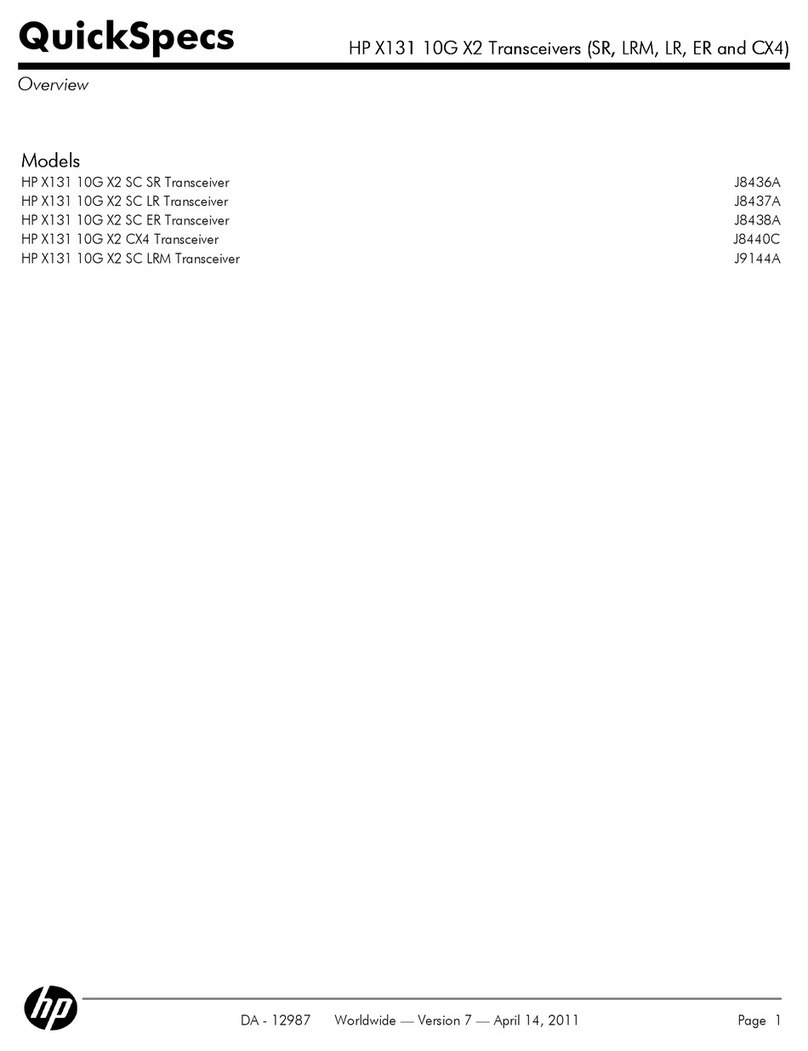
5
4. When power is applied to this trans-
ceiver and an active network cable is
connected to the transceiver port, the
Link LED for the port should be ON.
If the LED is off, see “Troubleshooting”,
below.
Troubleshooting
The following problems may exist:
■The Link LED for the transceiver is not on, even though the transceiver
is receiving power and the network cable is connected. Check the
following:
• Verify that the networked device at the other end of the cable is on.
• Verify that the cable fibers are connected correctly to the transceiver ports.
See step 3 in the installation instructions.
• Verify that the cable length does not exceed the maximum distances listed
on page 4.
• Check all cabling and connections (including patch panels) to make sure
that all connections are secure, no connectors are damaged, and that none
of the connectors have a dust buildup or other object in the way that may
cause interference to the light transmission. If all connections are OK, try
a different cable.
• Verify that the networked device connected to the transceiver is the correct
type for the transceiver used: Gigabit-SX or Gigabit-LX.
• Try resetting or cycling power (turn the power off and then back on) on
the networking device in which the transceivers are installed. If the trans-
ceiver is being used in a Gigabit Stacking Module and the module has been
“hot swapped” into the Switch 2424M, the resulting self test does not test
the transceivers. Resetting the switch causes a complete self test to be
performed, which does test the transceivers.
■The switch Fault LED and Link LED for the transceiver port are
flashing. Turn off the power and reinstall the transceiver into the module
or networking device and verify the transceiver screws are tightened. Turn
the device power back on, and if the flashing persists, the transceiver may
be faulty.
For additional troubleshooting, you can also use the device's console interface, the
switch’s web browser interface, or HP Top Tools for Hubs & Switches to trouble-
shoot and configure the Gigabit transceiver port. See the switch's Management and
Configuration Guide for more information.
If you are still having trouble, see the “Customer Support Services” on page 7.
Link LED
IP3DJH7KXUVGD\0DUFK30






























